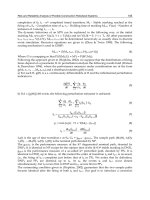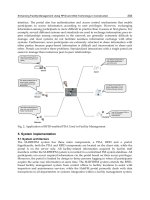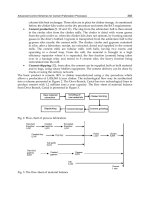Programme procurenment in construction
Bạn đang xem bản rút gọn của tài liệu. Xem và tải ngay bản đầy đủ của tài liệu tại đây (10.42 MB, 233 trang )
Free ebooks ==> www.Ebook777.com
Programme Procurement
in Construction
www.Ebook777.com
Free ebooks ==> www.Ebook777.com
JMM – For Jenny, Charlie Elvis and Ruben Tate
SG – In memory of my late mother, Mrs Vicky Gruneberg
www.Ebook777.com
Programme Procurement
in Construction
Learning from London 2012
John M. Mead
Part of an International Consultancy, engaged as
Principal Programme Supply Chain Manager for the delivery of Crossrail
Stephen Gruneberg
Reader, School of Architecture and the Built Environment
The University of Westminster
A John Wiley & Sons, Ltd., Publication
This edition first published 2013
© 2013 by John Wiley & Sons, Ltd
Registered office: John Wiley & Sons, Ltd, The Atrium, Southern Gate, Chichester, West
Sussex, PO19 8SQ, UK
Editorial offices:
9600 Garsington Road, Oxford, OX4 2DQ, UK
The Atrium, Southern Gate, Chichester, West Sussex, PO19 8SQ, UK
2121 State Avenue, Ames, Iowa 50014-8300, USA
For details of our global editorial offices, for customer services and for information about
how to apply for permission to reuse the copyright material in this book please see our
website at www.wiley.com/wiley-blackwell.
The right of the author to be identified as the author of this work has been asserted in
accordance with the UK Copyright, Designs and Patents Act 1988.
All rights reserved. No part of this publication may be reproduced, stored in a retrieval
system, or transmitted, in any form or by any means, electronic, mechanical, photocopying,
recording or otherwise, except as permitted by the UK Copyright, Designs and Patents Act
1988, without the prior permission of the publisher.
Designations used by companies to distinguish their products are often claimed as
trademarks. All brand names and product names used in this book are trade names, service
marks, trademarks or registered trademarks of their respective owners. The publisher is not
associated with any product or vendor mentioned in this book. This publication is designed
to provide accurate and authoritative information in regard to the subject matter covered.
It is sold on the understanding that the publisher is not engaged in rendering professional
services. If professional advice or other expert assistance is required, the services of a
competent professional should be sought.
Library of Congress Cataloging-in-Publication Data
Mead, John M. (Programme manager)
Programme procurement in construction : learning from London 2012 / John M. Mead,
Part of an International Consultancy and at the time of writing engaged as Principal
Programme Supply Chain Manager for Crossrail & Stephen Gruneberg, Reader, School of
Architecture and the Built Environment, The University of Westminster.
pages cm
Includes bibliographical references and index.
ISBN 978-0-470-67473-4 (pbk. : alk. paper) – ISBN 978-1-118-59744-6 (online product)
(print) – ISBN 978-1-118-59745-3 (emobi) (print) – ISBN 978-1-118-59746-0 (epub) (print)
– ISBN 978-1-118-59747-7 (epdf) (print) 1. Contractors’ operations. 2. Construction
industry–Management. 3. Construction contracts–United Kingdom. 4. Public works–
England–London. 5. Olympic Games (30th : 2012 : London, England) I. Gruneberg,
Stephen L. II. Title.
TA210.M43 2013
343.4207'8624–dc23
2012047263
A catalogue record for this book is available from the British Library.
Wiley also publishes its books in a variety of electronic formats. Some content that appears
in print may not be available in electronic books.
Cover image courtesy of John M. Mead
Cover design by His and Hers Design
Set in 10.5/14 pt Trump Mediaeval by Toppan Best-set Premedia Limited
1
2013
Free ebooks ==> www.Ebook777.com
Contents
About the authors
List of figures and tables
Forewords from Sir John Armitt CBE, Howard Shiplee CBE,
Martin Rowark and Professor Geoffrey E. Petts
Preface
List of acronyms
1.
2.
3.
xi
xiii
xv
xix
xxvii
Purchase and Supplier Engineering and
the London 2012 Olympics
1
Introduction
3
The concept of Purchase and Supplier Engineering
4
Programme organisation – an Olympic case study
8
Procurement organisation structure – the Olympic
Delivery Authority
11
Roles and responsibilities
11
Projects and programmes
13
Concluding remarks
14
Reference
15
A framework for understanding markets in construction
17
Introduction
18
Managing the supply market
19
The client and construction
23
Projects, programmes and construction dynamics
25
The client and the supply chain
27
Defining the supply chain
28
Outsourcing and subcontracting
31
Understanding and managing conflict in construction
34
Concluding remarks
39
References
40
The client’s values and the balanced scorecard
43
Introduction
44
Developing a framework for measuring performance
46
www.Ebook777.com
vi
4.
5.
Contents
All from a project vision
47
Performance measurement
50
Using balanced scorecards to communicate values and
measure performance
53
Developing a balanced scorecard
56
Measures including key performance indicators
58
Construction KPI measures of economic sustainability
58
Social sustainability: Respect for people KPI measures
59
Environmental sustainability: Environmental KPI
measures
59
Creating appropriate KPIs from a project vision and
scorecard
62
Concluding remarks
63
References
64
Packaging and contracting strategies
65
Introduction
66
What, why and how to buy
68
Packaging strategy
70
Gestalt theory
73
Programme clusters
75
Programme application
78
Contracting strategy
79
Forms of contract used in the 2012 Olympics
procurement
79
Classification of contracts
82
Concluding remarks
85
References
88
Common component and commodity strategies
89
Introduction
90
The benefits of a common component strategy
91
Factors influencing the procurement of common
components
93
Market leverage
93
Supply chain security
95
Contents vii
Future maintenance and operations
95
Design efficiencies
96
Developing a common component strategy
6.
7.
96
Stage 1: Performance criteria
97
Stage 2: Assessment of benefits of implementing
a common component strategy
98
Stage 3: The benefits of a common component
purchasing strategy
99
The common component procurement strategy
100
Concluding remarks
102
References
102
Engaging with suppliers: How to attract suppliers and
increase interest and awareness
103
Introduction
105
Gathering market intelligence
107
Supplier dialogue
109
One-way supplier dialogue – Supply chain events
110
One-way supplier dialogue – Industry days
110
One way supplier dialogue – One-to-one meetings
111
One-way supplier dialogue – Meet the buyer events
112
One-way supplier dialogue – Meet the contractor events
113
One-way supplier dialogue – Supplier guide
114
One-way supplier dialogue – Business opportunities
website
115
One-way supplier dialogue – Opportunity slides
117
Two-way supplier dialogue – Supplier registration and
pre-assessment questionnaires
117
Two-way supplier dialogue – Market soundings
120
Concluding remarks
125
Reference
126
eSourcing and process codification: Standardising
programme procurements
127
Introduction
128
The guiding principles of a robust procurement process
129
viii Contents
Standardising procurement documentation
130
Security of the procurement system
131
Evaluation of tenders
132
The application of electronic tools in the
procurement process
133
eSourcing
134
eEvaluation
139
Aspects of managing systematic procurement processes
141
Standard processes
141
Schools of excellence
142
Governance
143
Assurance
144
Training
145
The milestones of procurement reporting
146
Standardisation and codification of the procurement process 147
8.
9.
Stage gate 1 – Agreeing the procurement strategy
148
Stage gate 2 – Tender documentation completion
148
Stage gate 3 – Tender list agreement
149
Stage gate 4 – The tender report
149
Procurement reporting
151
Concluding remarks
151
References
154
Managing supply chain involvement across a programme
155
Introduction
156
Supplier relationship management
157
Remaining in contact with all firms who tender for work
159
Supply chain mapping
162
Concluding remarks
167
Reference
168
Due diligence and the management of capacity
169
Introduction
170
Modelling supplier utilisation
170
Monitoring the financial strength of suppliers
180
Sub-tier supplier engineering
182
Contents
ix
Identifying critical suppliers
185
Concluding remarks
189
References
191
10. Performance management
193
Introduction
195
The Purchase and Supplier Engineering model and
programme management
195
Purchase and Supplier Engineering and the programme
management office
197
Performance management within Purchase and
Supplier Engineering
197
Analysis
198
Control
199
Performance improvement through Purchase and
Supplier Engineering
200
Benchmarking
201
Concluding remarks
201
Index
205
Free ebooks ==> www.Ebook777.com
About the authors
John M. Mead is part of an International Consultancy and has previously
led the Supply Chain Management function for the delivery of the infrastructure for the London 2012 Olympic and Paralympic Games. At the
time of writing this book, he was engaged in a similar role on the £14bn
Crossrail construction programme to build a railway which tunnels
under London.
Stephen Gruneberg is a Reader at the University of Westminster and a
Visiting Fellow at the Faculty of the Built Environment, Northumbria
University. Stephen is an industrial economist specialising in the construction and property sectors and has written and co-written numerous
books, reports and papers.
www.Ebook777.com
List of figures and tables
Preface Figure 1
Figure 1.1
Figure 1.2
Figure 2.1
Figure 2.2
Figure 3.1
Figure 3.2
Figure 3.3
Figure
Figure
Figure
Figure
3.4
3.5
3.6
3.7
Figure 4.1
Figure 4.2
Figure 4.3
Figure 4.4
Figure 4.5
Figure 4.6
Figure 4.7
Figure 4.8
Figure 6.1
Figure 6.2
The PSE model in relation to the chapters
of this book
xxv
The Purchase and Supplier Engineering (PSE)
Model
7
Programme-level procurement function matrix
organisation
12
The manipulation of supply
20
Example of a supply chain hierarchy
29
The vision and perspectives of the
infrastructure works for London 2012
48
The logic and implications of themes derived
from the vision statement
49
The linkages of the strategic goals developed
from the vision statement
50
Critical success factors and strategic goals
51
ODA Balanced Scorecard
54
Triple-bottom-line sustainability model
57
Performance indicators used on the London
2012 Infrastructure programme
62
The procurement cycle
70
Tender event schedule, programme schedule
and procurement strings
72
An optical illusion
73
Gestalt diagram of eight independent
rectangles arranged in two groups of four
74
Diagram of eight projects arranged in two
groups of four
75
London 2012 programme clusters
77
Definition versus Risk matrix
83
Clusters, contract classification and
contracts used
86
The market engagement cycle
108
Supplier dialogue mechanisms, their timing
and relative cost
110
xiv List of figures and tables
Figure 6.3
Figure 6.4
Figure 7.1
Figure 7.2
Figure 7.3
Figure 7.4
Figure 7.5
Figure 7.6
Figure 7.7
Figure 8.1
Figure 8.2
Figure 9.1
Figure 9.2
Figure 9.3
Figure 9.4
Figure 9.5
Figure 9.6
Figure 10.1
Figure 10.2
Table 3.1
Table 5.1
Table 9.1
Simple pre-assessment process
How the pre-assessment questionnaire fits
into the overall procurement process
The formal procurement process: eEvaluation
and eSourcing
The home page of the RICS eTendering site
Page taken from an online Pre-Qualification
Questionnaire (PQQ)
Page taken from an online pricing document
Screen shot courtesy of QinetiQ Commerce
Decisions Ltd showing their online
eEvaluation system, ‘Award’
An example of a Schools of Excellence
structure
The 13-step procurement process
Example of a tier 1 contractor supply chain
map within one cluster category
Screenshot of a full tier 1 supply chain map
for the Crossrail programme
The relative bargaining positions of buyers
and purchasers
Contractor exposure, showing peak exposure
and utilisation percentages over time
Appetite graph, showing awarded and tendered
projects against engaged contractors
CapEx compared to OpEx – the paradox of
expenditure
Identifying critical packages and their
suppliers
Programme supply chain management –
dimensions of influence
Programme management model
The cycle of Defining, Measuring,
Analysing, Improving and Controlling for
programme supply chains
Example of an Operational Measurement
Programme scope and procurement
Capacity of contractors viewed against
projects
119
120
134
136
137
138
140
143
150
163
164
173
177
178
184
186
188
196
198
61
97
176
Forewords
Rarely, if ever, has the British construction industry delivered a major
construction programme on the scale of the London 2012 Olympics,
with so much success in terms of timeliness and quality while remaining within budget and without any of the acrimony that is so often
associated with major construction projects. The London 2012 construction programme and its outcome have already proved to be a source of
pride and achievement not only for the construction client, the workers
who built it, the firms involved and the UK construction industry in
general but also for the UK as a whole. So much so that politicians from
all parties have praised the delivery and construction of the games infrastructure and have been keen to promote the methods used to build the
Olympic Park and the other venues in order to repeat the success of the
construction process and promote the methods throughout the construction industry.
Naturally, many factors came together to build that success but one
of the key foundation blocks to the delivery of London 2012 was the
way in which the buildings, stadia and infrastructure of the Olympic
Park were procured. In my report, London 2012 – a global showcase for
UK plc, I make the recommendation that, ‘Government should adopt
the principles of the procurement and programme management approach
used by the ODA, [the Olympic Delivery Authority], for all public sector
projects valued at over £10m’.
This book gives an account of the actual methods that were used in
the programme procurement. The techniques described in this book
were combined in such a way that those who led the procurement team
named their approach Purchase and Supplier Engineering (PSE), an
approach that could only have been developed because the complexity
of the programme was recognised by the ODA, who recognised the need
to allow a highly gifted and professional team to devise the most appropriate procurement methods.
This book describes the procedures, techniques and methods that
were used to such great effect. It can only be hoped that the success of
the London 2012 programme will be used to encourage others to adopt
or adapt the same or very similar strategies, not only in the UK but
xvi Forewords
around the world, wherever major construction programmes require the
management and co-ordination skills and understanding that procured
and delivered the London Olympics. Indeed this has already begun to
happen as PSE has been adopted on the Crossrail programme, also discussed in this book. The London 2012 programme was a success; I hope
this book will help future programmes to enjoy similar success.
Sir John Armitt CBE, Chairman, Olympic Delivery Authority
* * *
The delivery of the London Olympic Park and venues has won wide
acclaim as a showcase for UK plc. However, at the start of this epic
journey in 2006 the horizon was very different, as demonstrated by an
almost total lack of interest from industry in participating.
This is not surprising as the problems of Wembley were unfolding at
the time and industry enjoyed a boom of activity. Why would anyone
wish to participate in such a high profile enterprise with a fixed and
very public end date and an international history of delays, cost overruns and lost reputations?
Into this arena stepped the Olympic Delivery Authority as the Government agency charged with delivery. If national objectives were to be
met then industry resources would have to be mobilised on a massive
scale. To achieve this, the ODA would have to gain in months what
many client organisations pursue for years – their establishment as a
recognised client of choice.
The first stage in this process was to carefully listen to industry and
its aspirations and to convert these into well defined and communicated
commitments as to how the ODA, as client, would behave and how
industry was expected to reciprocate. Of course, talking and doing can
be very different. However, early engagement in the procurement process
demonstrated that commitments would be met and built with a solid
foundation on which to go forward.
Industries do not create markets; that is for clients to do and they
usually get what they deserve. In the case of London 2012 the ODA
received the total support and commitment of UK plc which over time
developed into a matter of national pride with all participants giving of
their best and no one prepared to let the side down.
It is said that those who ignore history are destined to relive it.
However, the success of London 2012 does not have to be a one time
Forewords xvii
achievement but rather a beacon of how things can be. This book charts
how all this was achieved and for those who take note of the many
lessons learned and apply them appropriately the potential for a successful outcome is vastly increased.
Howard Shiplee CBE, Executive Director, Laing O’Rourke and
previously Director of Construction, Olympic Delivery Authority
* * *
The construction industry has always been a contradiction whereby
those that have the vision for how our built environment should develop
are trained artistically (as creative people) and those who create that
environment are trained as technicians (adapters). Creative people have
vision, whereas adapters solve practical problems. There is a gap. The
technocrats do not fill the gap; they just help define its edges.
This book describes a methodology that fills the gap, that takes the
vision of the creatives and provides a sound and tested base on which
the adapters can work. Purchase and Supplier Engineering (PSE) was
brought together from best practice applications across industry, the
catalyst being the London 2012 Olympic Games. The need for Usain
Bolt to tie up his running shoe laces at a given moment, on a specific
day five years in the future, galvanised thought since 2006. The degree
of national embarrassment as a result of a late Olympics was unimaginable. The result was the creation of a hugely successful methodology
of procurement and supplier management that was made up of parts
that in themselves were nothing particularly new, rather a great recipe
made up of sound ingredients.
Crossrail is one of the largest and most significant transport projects
ever undertaken in the Western hemisphere. It has little of the kudos
of an Olympic Games but at an engineering level it is astonishing. To
bore twin tunnels to take a full size railway under the quite ancient city
of London and beyond is the stuff of HG Wells and science fiction.
Crossrail has been a programme that has not played the ‘not invented
here’ card but has instead embraced best practice. The PSE approach to
procurement has been fully adopted by Crossrail Limited and has been
used to procure the entirety of the portfolio of construction and engineering contracts, roughly twice the size of the Olympic Delivery
Authority’s programme, albeit not nearly as diverse or unique.
xviii
Forewords
At the time of writing this, I cannot imagine that Crossrail will have
quite the Topping Out ceremony that The London 2012 Olympics build
enjoyed. However, what it does prove is that the construction legacy of
the Olympics is alive and well and thriving.
Martin Rowark, Procurement Director, Crossrail
* * *
PODIUM, the Further and Higher Education Unit for the 2012 Games,
was established in 2007 to maximise the engagement of universities and
colleges across the United Kingdom in London 2012 and to use the
Games to promote and showcase the contributions made by UK universities and colleges nationally and globally. These contributions to the
legacy of London 2012 include the timely critical appaisal of all the
dimensions of the Olympipc and Paralympic Games, drawing lessons
for the development and management of future ‘mega’ events. Programme Procurement in Construction: Learning from London 2012 by
my colleague Stephen Gruneberg and his co-author John Mead is one of
the first tangible academic contributions to the legacy of the Games.
The scale and complexity of the construction programme was
immense; its delivery was inspiring and a global showcase for UK plc.
The leader of the ODA, Sir John Armitt, has suggested that lessons
should be translated to other major public sector projects. The procurement processes were at the heart of the success story. This book provides an appraisal of those processes and highlights the lessons to be
learned. It will become an important element of the London 2012 legacy.
Professor Geoffrey E. Petts, Chair, PODIUM, and Vice Chancellor,
The University of Westminster
Preface
The construction of the venues and necessary infrastructure to stage the
London 2012 Olympics was such a resounding success that it boosted
not only the reputation of the UK construction industry, but also the
confidence of the UK population in the country’s ability to organise,
build and run a major international event. Just as the US man-on-themoon rocket programme challenged the competence of the whole industrial and technological base of the United States, the 2012 Olympic
programme demonstrated the ability of the UK construction industry to
provide a built environment to the highest standards of quality, on time,
without a single fatal construction accident, in spite of its immense
scale and engineering and logistical complexity.
Many factors contributed to this achievement and one of those, in
particular, was the method used to mobilise the construction industry
to respond to the requirements of the construction programme in the
first place. Many issues needed to be resolved. How does one buy the
stage for an Olympic Games? How does one engage with the construction industry that will be charged with the delivery? How does one
manage the details of thousands of contracts and the many firms of
contractors, subcontractors and material suppliers and ensure that no
one organisation adversely affects any other, to the detriment of the
programme? How does one judge quality at the tender stage? Or monitor
progress? Or, for that matter, how does one measure programme exposure, or manage performance? How does one maximise competition
during procurement without stepping on a legal minefield of obligations? How does one measure capacity and the ability of firms to cope
with the work and the risks involved? These and many more questions
and issues are dealt with in this book.
The careful and painstaking preparation of the procurement processes
is discussed, ranging from understanding and developing the appetite of
contractors and encouraging them to engage with the procurement
process, to monitoring performance based on the contractors’ own performance claims as set out in their tender submissions. The emphasis
of the approach described is based on a close attention to detail to avoid
surprises, while keeping a focus on the total programme. By not doing
xx
Preface
anything radically innovative or indeed difficult, but by doing simple
things thoroughly in a coordinated and strategic way, a big picture is
produced that is relatively easy to manage and control, with fewer
Rumsfeldian unknowns.
Taken together, the methods and processes described here define an
approach the authors and originators have termed Purchase and Supplier
Engineering (PSE). Although similar to Supply Chain Management in
many ways, PSE is a particular strategic approach to procurement that
takes into account the state of the construction market at the inception
of the procurement process and the early engagement of possible contractors. PSE provides an overview of the interest of firms in participating and the resulting capacity and workloads of all suppliers, including
the main contractors and the critical subcontractors and materials suppliers. Having established the strategic approach for programme procurement and having organised the tendering process and awarded the
contracts, PSE follows through by monitoring progress and risk throughout the construction phase and for all critical suppliers in the supply
chain.
In a recent article, Hunter (2012) refers to new legislation in the UK:
the Public Services (Social Value) Act, which from 2013 requires publicservice contracting authorities to take into account economic, social
and environmental impacts, balancing price, quality and social value in
their procurement strategies. He also talks about engaging with the
market before commissioning work, but he does not say how these
issues may actually be dealt with in practical terms. This book describes
how these and many more objectives were addressed in two major programmes: namely, the London 2012 Olympics construction programme
and the Crossrail programme. The former bore the title of the largest
construction programme in Europe, only to be beaten by the latter, with
a combined total budget well in excess of £20 bn.
The concepts and techniques used in the programme were not one-off
techniques developed for the London Olympics alone, delivering success
for just the ODA. Since the completion of London 2012 they have been
further developed by its originators and either wholly or partially adopted
on numerous other major construction programmes including the
£14.8 bn Crossrail rail programme, which involves tunnelling 21 km of
twin-bore tunnels under the heart of London and includes eight new
sub-surface railway stations.
It takes a client with great vision and foresight to commit to investing
in this PSE strategic approach to procurement and supply chain management, but the approach has demonstrated its ability to deliver a high
Preface
xxi
degree of predictability and give clients what they set out to achieve not
only in terms of the financial and economic objectives of budgets and
schedules, but also in terms of the client’s social and environmental
objectives. The approach has also shown its ability to avoid the costs
associated with supply chain insolvency, while achieving savings in
common components and commodities.
We realise that these are extraordinary claims and that many factors
contributed to the success of London 2012. However, in the euphoria of
the Games and in the aftermath of the events, there has been very little
criticism – if any – of the way the construction programme was conducted. Indeed, since the use of PSE by the ODA, elements are now
being used to a greater or lesser extent on all manner of construction
programmes, including those in the energy-generation, transport and
utilities sectors across both public- and private-sector procurement.
For these reasons this book is aimed at public- and private-sector
clients, developers, senior management and those professionals involved
in undertaking the procurement, supply chain management and delivery
of complex major construction programmes or those organisations, such
as major tier 1 contractors, that manage large and diverse portfolios of
projects across multiple client bases. The concepts described can be
applied in part or in whole to portfolios of projects on a smaller or larger
scale than that of an Olympic or Crossrail programme. However, to
demonstrate the usefulness of the PSE model, these two particular programmes are used throughout as examples.
The specific management processes that were used in developing the
PSE approach to procurement for the Olympic programme for London
2012 are described in this book. No attempt has been made to make a
critical evaluation of the processes. Possibly, over time, a critique of the
methods used to procure the built infrastructure of the Games may
emerge. In the meantime, the authors have endeavoured to give an
account of each element in the procurement process to provide the
rationale behind the methods used.
Success and failure are often the result of a number of different factors.
Attributing success to one particular aspect of a large and complex programme such as the Olympics can be misleading. All those involved in
the many aspects of the programme were very aware of the great debt
owed to the many thousands of people who contributed their diverse
skills and expertise to the success of the overall project. They were also
aware that numerous voices were raised in criticism of the Games, and
doubts were raised about the ability of the ODA to complete their task.
However, once the actual sporting events commenced, it became clear
Free ebooks ==> www.Ebook777.com
xxii
Preface
that the UK construction industry had delivered on its promises and
given the London Organising Committee for the Olympic Games
(LOCOG) its internationally recognised venues and infrastructure. How
these promises were achieved is described in the chapters of this book,
in the hope that the lessons learned from this experience can be transferred to other construction programmes and portfolios of projects both
in the UK and around the world.
The book is divided into three main sections. The first part is concerned with engaging the supply market. The second part deals with
the organisational aspects of programme procurement, including the
appointment of contractors and the approach used to decide on the contractual arrangements used. The third part describes the management
and monitoring of the performance of the critical supply chain organisations during the construction phase. The first chapter introduces the
concept of Purchase and Supplier Engineering, (PSE), which was developed in response to the complexity of the programme’s many procurements as their associated processes emerged. Chapter 1 discusses the
structure of the organisation of the programme procurement, showing
how the delivery partner was engaged as a specialist procurer on behalf
of the ODA. One of the key themes of this chapter is the role of the
delivery team in interpreting the goals of the client in terms of what the
construction contractors were required to deliver. Delivering the vision
of the client was central to the purpose of the delivery partner. The
chapter concludes by introducing the distinction between projects and
programmes.
Chapter 2 provides an overview of the basic economics theory that
underpins PSE. That involves a clear perception of the construction
market and the wider market forces facing the purchasers and suppliers.
The engagement of firms is directly related to the theoretical perspective
described. This approach prepares the strategy adopted in PSE for delivering procurement on large construction programmes, a strategy that
creates a competitive environment amongst suppliers at all levels in the
programme with the purpose of delivering value.
Chapter 3 describes the aims of the client in terms of their values,
priorities and critical success factors. In particular, the needs of a client
may extend beyond the provision of a physical structure, as major building programmes such as London 2012 tend to impact on local and even
national economies, with wider social, environmental and political
implications. The client’s priorities can then be translated into the
requirements to be met in the form of built structures, how they are
www.Ebook777.com
Preface xxiii
delivered, how they are to be utilised and the legacy they leave behind
over the life of the assets. The values expressed in the priorities of the
client, including political priorities and often contradictory aims and
ambitions, are linked to strategic goals, which in turn form the basis for
measuring delivery performance and the programme’s wider success.
Chapter 4 deals with the need to reduce the complexity of the many
different projects within a single programme. As with any large construction project, packaging strategies have to be devised that define the
parameters of each contract. In a programme on the scale of London
2012 the packaging strategy included definitions of the different facilities and the infrastructure that were needed.
Complexity is dealt with by clustering the major packages in a programme, where common characteristics can be identified. The six clusters of the London 2012 programme were structured from the ground
up, much like the layers of a cake with the landscape and public-realm
cluster as the icing on top. Clustering projects limited the number of
different contracting solutions that were required to be used, simplifying
the management of the whole process. On the London 2012 programme,
most of the contract arrangements were based on variants of the third
edition of the New Engineering Contract, and the chapter explains the
specific contract types that were used and their appropriateness for each
element in the programme.
Chapter 5 discusses the benefits of procuring common components
and commodities, where these were being used across the programme
or on several projects or facilities being constructed simultaneously or
even concurrently. The question of whether a common component
strategy is required is addressed and the chapter explains how it may be
achieved, if appropriate. The advantages of purchasing common components are numerous and include securing supply, achieving economies
of scale through bulk purchasing, and maintenance cost reductions.
It is essential that potential suppliers have confidence in the professionalism, knowledge and experience of the client body. With a procurement strategy in place for the facilities and the common components,
the client is then in a position to approach suppliers. Chapter 6 deals
with the methods used to engage with the supply market. The appetite
of firms to become involved and motivated determines the capacity of
the market to supply what is needed to deliver the requirements of the
programme. Dialogue with suppliers is essential and no fewer than
10 different methods used are described that together generated the
intelligence to inform procurement, avoid surprises and gain the
xxiv Preface
commitment needed on all sides to deliver the full programme meeting
the client’s needs and priorities.
In Chapter 7 the PSE concept is used to standardise the procurement
process and make it systematic, efficient and more of a procurement
production machine. This represents the formal engagement of contractors and suppliers based on a set of standardised documents and procedures. It is essential that the tendering process is conducted efficiently
with clarity, auditability, transparency and fairness. On the London
2012 programme electronic tools for eSourcing and eEvaluation were
used to facilitate the tendering process via the internet. The use of
digital technology fits the conventional procurement process, while
standardising the approach to facilitate ease of procedural management,
assurance and governance.
The relationships between the client body and contractors need to
be managed throughout the tendering process and subsequently on an
ongoing basis, and this aspect is discussed in Chapter 8. It is essential
if the client is to maintain control over the construction process without
impacting on the formal legal roles, rights and duties of the various
parties engaged in the process. The client, for example, needs to map
the supply chain to monitor the vast number of contracts and contractors involved. The method used to map the elements of the supply chain
is shown, from directly contracted tier 1 suppliers to the indirectly subcontracted critical tier 2 and 3 supply chain.
It is not possible for a client to procure a large programme without a
system of checks to assess the reliability of the supply chain. This is
known as ‘due diligence’ and is concerned with assessing the financial
capability and capacity of firms to deliver what is required of them at
project and programme levels. That leads into a discussion of risk and
exposure. Chapter 9 is therefore concerned with the methods used to
measure the ability of firms to deliver. Due diligence on the part of
the client extends to monitoring the financial strengths of contractors
relative to their contractual commitments, with a view to anticipating
difficulties and dealing with them in good time, where possible and
appropriate. This overview is not concerned only with main or tier 1
contractors, but is also needed at the critical tier 2 and 3 subcontractor
level – and indeed applies to any supplier deemed to be of strategic
importance to the programme.
In the final chapter, Chapter 10, the performance of firms in the construction phase is reviewed in terms of the commitments made by the
winning suppliers during the tender process. After all, their appointment
was made on the basis of the approaches described in their tender
Preface xxv
submissions. The use of the Balanced Scorecard to establish the client’s
priorities and the response of suppliers at tender stage to meet those
requirements can therefore be compared to the actual outcomes, behaviour and processes of these firms during the delivery phase. The use of
benchmarking and key performance indicators as tools to monitor
progress and improve performance is also discussed.
In Chapter 1 a model of PSE is shown in Figure 1.7. We use the same
diagram below, superimposing the chapter boundaries on the PSE model,
to help the reader to identify the specific elements of each chapter and
to make the navigation of the book relate to the logic of the deployment
of PSE. In Preface Figure 1, each chapter deals with one key part of the
PSE model, as described in the chapter summaries above.
Many of the key proponents and originators of the concepts deployed
by the Olympic Delivery Authority (ODA) that have since come to be
known and recognised as PSE contributed to this book. While there is
not enough space to mention the names of the many thousands of people
and organisations that came together to make London 2012 the huge
success it was, the authors would like to give special mention and
thanks to those key originators who developed and implemented PSE
Chapter 3
Purchase engineering
Chapter 4
Chapter 5
Chapter 7
Purchasing
- Packaging strategy
- Contracting strategy
- Common components
- e-Tendering/e-Evaluation
- Process codification
Supplier engineering
DEVELOP
REQUIREMENTS
Contract Delivery
- Performance management
Chapter 6
Chapter 8
- Position audit
- Performance
measurement
- Balanced scorecard
Chapter 10
Vendor engagement
- Market intelligence
- Supplier dialogue
- Strategy validation
LESSONS
LEARNT
Appetite management
- Supplier relationship
management
- Bidder tracking
- Supply chain mapping
Capacity management Chapter 9
- Supplier utilisation model
- Supplier fiscal monitoring
- Sub-tier supplier engineering
- Sub-tier purchasing oversight
Preface Figure 1 The PSE model in relation to the chapters of this book.
xxvi Preface
on London 2012; they were Martin Rowark, Kevin Lloyd-Davies, Peter
Sell and Andrew Garbutt. The authors would like to express their gratitude for their expert input and advice in developing the thinking behind
the concepts described and delivered for the London 2012 programme
and in bringing this book to fruition.
The authors are grateful to the Olympic Delivery Authority (ODA) and
their Delivery Partner, CLM, for being forward-thinking enough to
embrace the approach developed by the team for the London 2012 programme; and again we mention specifically Mark Reynolds, Kenneth
Owen and Paul Dickinson of CLM and Morag Smith (née Stuart), Howard
Shiplee, Huw Edwards and Sir John Armitt of the ODA for their support,
both during construction and since, in recognising and championing the
approaches developed.
We are also grateful to Crossrail for their support and encouragement
in furthering the concepts developed for London 2012, and in particular
thanks should also go to Martin Buck, Valerie Todd, and Andrew Wolstenholme. In mentioning the ODA, CLM and Crossrail, we apologise
for not mentioning everyone by name directly.
Thanks should also be given to Rob Garvey for bringing the authors
together and sparking the idea for this book. In addition, the authors
wish to thank Madeleine Metcalfe and Beth Edgar for the time, effort
and care they put into mentoring us throughout the process of writing
and producing the book and to Ruth Swan, Teresa Netzler and Patrick
Roberts for their vital contributions. It is, of course, in spite of their best
endeavours, that responsibility for any errors and omissions remains
with the authors. Recognition is also due to the the PSE team members
who have helped road test and evolve this model: these include Lee
Taylor, Mark Lythaby, Vanessa Good, Jitendra Chouhan, Gary Wright,
Nazir Fard, Simon Pain and Joanna Lewis, all good colleagues and friends.
Finally, but by no means least, thanks are due to the authors’ families
for their support and patience, when spare time that was meant to be
family time became more time spent working!
John M. Mead
Stephen Gruneberg
Reference
Hunter, D., (2012) ‘Real value demands a bold approach’, Public Servant, September, p. 24.
(accessed 5 October 2012).
List of acronyms
BAA
BMX
CCJ
CD-ROM
CE
CECA
CH2M Hill
CIOB
CLM
CPA
CSF
DMIAC
DNA
DP
DQI
DVD
ECI
EOI
EPC
EU
ICT
IT
ITT
KPI
LAD
LEIA
LOCOG
M and E
MEAT
MS
NAO
NEC
NSCC
British Airports Authority
Bicycle motorcross
County Court Judgement
Compact disc-read only memory
Constructing Excellence
Civil Engineering Contractors’ Association
Cornell, Howland, Hayes, and Merryfield (CH2M Hill is
the name of a firm)
Chartered Institute of Builders
CH2M, Laing O’Rourke, Mace, the delivery partner
Construction Products Association
Critical success factors
Define, measure, analyse, improve, control
Deoxyribonucleic acid
Delivery partner
Design quality indicator
Digital versatile disc
Early contractor involvement
Expression of interest
Engineering, procurement and construction
European Union
Information and communications technology
Information technology
Invitation to tender
Key performance indicator
Liquidated and ascertained damages
Lifts and Elevators Industry Association
London Organising Committee for the Olympic Games
Mechanical and electrical (construction)
Most economic advantageous tender
Market sounding
National Audit Office
New Engineering Contract
National Specialist Contractors’ Council









